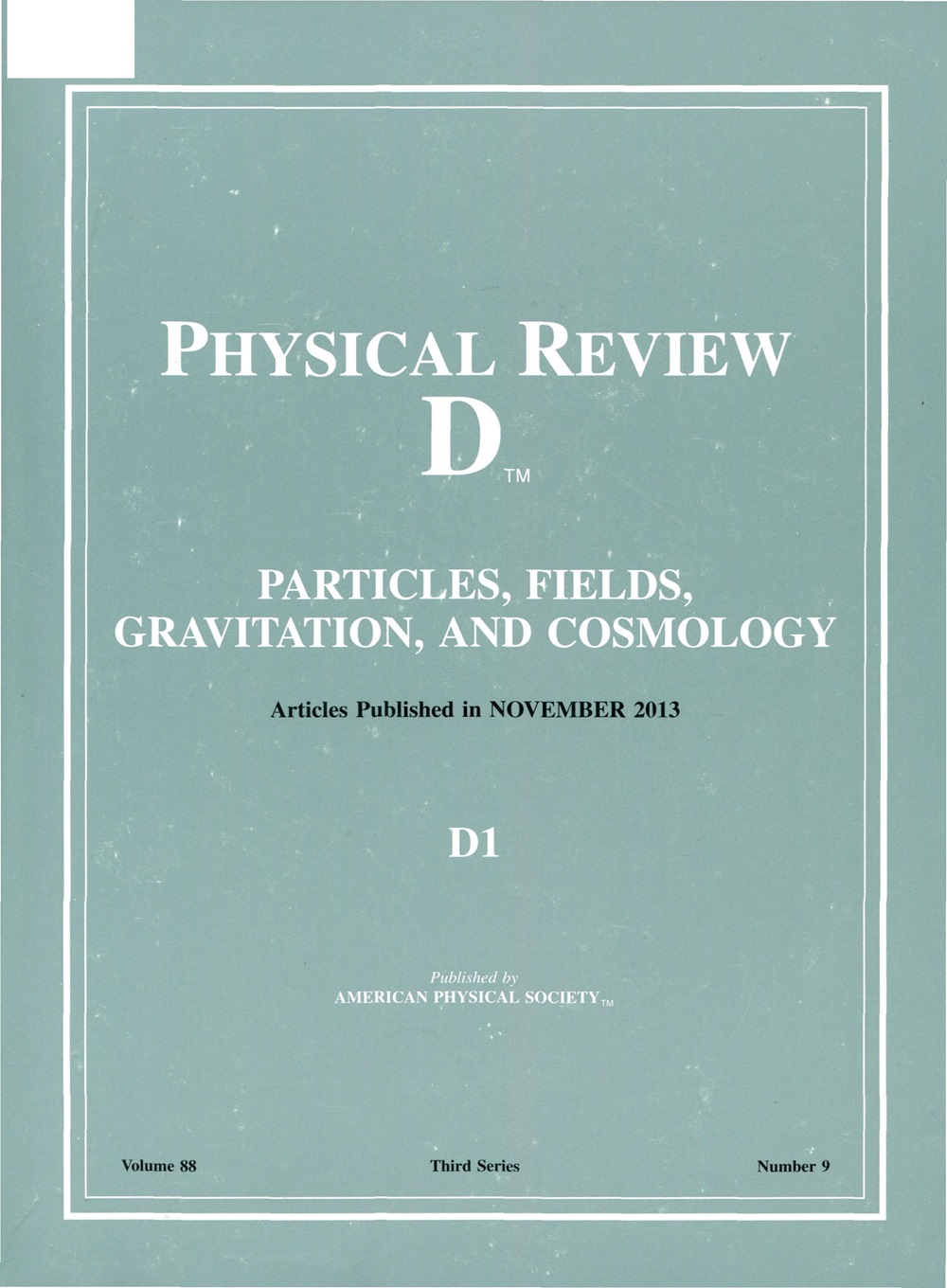吸气双中子星引力自力增强潮汐现象学模型
IF 5
2区 物理与天体物理
Q1 Physics and Astronomy
引用次数: 0
摘要
来自吸积双中子星的引力波提供了接触超密集核物质的独特途径,并提供了通过潮汐测量来约束目前未知的中子星状态方程的能力。然而,这需要精确而高效的潮汐波形模型。在本文中,我们介绍了频域中子星吸气的新现象学潮汐相位模型phenomgsf,它捕捉了时域有效单体模型teobresums的引力自力和潮汐贡献。phenomgsf具有很高的忠实度和计算效率,通过选择模块化方法,它可以与任何频域双黑洞波形模型结合使用,生成双中子星吸气的完整相位。phenomgsf适用于质量不等和质量比在1到3之间的中子星双星,无量纲潮汐变形率最高可达5000。此外,phenomgsf 并不假定普遍关系或参数化状态方程,因此可以进行奇异物质分析和超越标准模型的物理学研究。我们通过与 Teobresums、数值相对论波形和完全贝叶斯推理的比较,包括对双中子星观测 GW170817 的重新分析,证明了我们模型的有效性和准确性。本文章由计算机程序翻译,如有差异,请以英文原文为准。
Phenomenological model of gravitational self-force enhanced tides in inspiraling binary neutron stars
Gravitational waves from inspiraling binary neutron stars provide unique access to ultradense nuclear matter and offer the ability to constrain the currently unknown neutron star equation-of-state through tidal measurements. This, however, requires the availability of accurate and efficient tidal waveform models. In this paper we present phenomgsf, a new phenomenological tidal phase model for the inspiral of neutron stars in the frequency domain, which captures the gravitational self-force informed tidal contributions of the time-domain effective-one-body model teobresums. phenomgsf is highly faithful and computationally efficient, and by choosing a modular approach, it can be used in conjunction with any frequency-domain binary black hole waveform model to generate the complete phase for a binary neutron star inspiral. phenomgsf is valid for neutron star binaries with unequal masses and mass ratios between 1 and 3, and dimensionless tidal deformabilities up to 5000. Furthermore, phenomgsf does not assume universal relations or parametrized equations of state, hence allowing for exotic matter analyses and beyond standard model physics investigations. We demonstrate the efficacy and accuracy of our model through comparisons against teobresums, numerical relativity waveforms and full Bayesian inference, including a reanalysis of the binary neutron star observation GW170817.
求助全文
通过发布文献求助,成功后即可免费获取论文全文。
去求助
来源期刊

Physical Review D
物理-天文与天体物理
CiteScore
9.20
自引率
36.00%
发文量
0
审稿时长
2 months
期刊介绍:
Physical Review D (PRD) is a leading journal in elementary particle physics, field theory, gravitation, and cosmology and is one of the top-cited journals in high-energy physics.
PRD covers experimental and theoretical results in all aspects of particle physics, field theory, gravitation and cosmology, including:
Particle physics experiments,
Electroweak interactions,
Strong interactions,
Lattice field theories, lattice QCD,
Beyond the standard model physics,
Phenomenological aspects of field theory, general methods,
Gravity, cosmology, cosmic rays,
Astrophysics and astroparticle physics,
General relativity,
Formal aspects of field theory, field theory in curved space,
String theory, quantum gravity, gauge/gravity duality.
 求助内容:
求助内容: 应助结果提醒方式:
应助结果提醒方式:


